Edfu Texts Reveal Secrets Of Predynastic Egypt And Zep Tepi
Ellen Lloyd - AncientPages.com - The Edfu temple is one of the most sacred buildings in Egypt. Known today as Idfu, the ancient city of Edfu located in Upper Egypt, located sixty miles south of Luxor owes its importance to the Temple of Horus.
“It took from 237 to 57 BCE to build and decorate the Horus temple – the largest temples still standing in Egypt.” 1
Inside the Temple of Edfu. Credit: Adobe Stock -Konstantin
Having stood for a long time covered by sand, the magnificent temple was long forgotten, but French Egyptologist Auguste Mariette (1821-1881) and his team spent many years clearing the ancient building, bringing its secrets to light. The vast number of inscriptions carved on the walls of the Edfu temple offers a unique insight into the enigmatic ancient Egyptian history.
“The Horus temple text have been published in their entirety, and the construction and descriptions of different sections of that temple were recorded in the dedication texts.” 1
The French Egyptologist Emile Chassinat (1868-1948) spent 40 years examining the enormous number of Edfu inscriptions. He copied the texts, inscriptions, and scenes from the temple walls and published his research consisting of fourteen volumes. Eight volumes contained 3,000 pages of hieroglyphical texts, two volumes were filled with sketches and four volumes offered unique and fascinating. Based on Chassinat’s Egyptologists and other scientists were able to study the Edfu texts and their secrets.
Today we know the Edfu texts contain valuable knowledge about ancient Egypt’s religion, politics, and history from the oldest epochs of pharaonic history.
What Can The Edfu Texts Reveal About Zep Tepi?
“In the passage separating the temple from the enclosure wall, engravings tell the great myths: that of the genesis of the temple, the Horus myth, the rite of net hunting, and the feast on the first day of the month called Tybi. On the exterior wall, the important registry text of the endowment of Edfu was recorded. The pylon records the glory of Horus, based on the transfer of Horus from Osiris and Re.”1
One of the most interesting epochs mentioned in Egyptian mythology is Zep Tepi. It was during Zep Tepi Gods established their kingdom on Earth in Egypt and performed their deeds that were later described in myths.
“During this Golden Age, only the Gods existed, and many world-forming events transpired.” 2 Most Egyptologists dismiss Zep Tepi as a mythical story. Still, some researchers suggest Zep Tepi was an actual historical epoch.
The Edfu Temple's walls are covered with ancient inscriptions. Credit: Adobe Stock - olab214
According to the Edfu texts, “the words of the “Seven Sages” were recorded by the god Thoth—the Egyptian principle of writing and wisdom—in a book entitled Specifications of the Mounds of the Early Primordial Age.
This book listed the locations of sacred mounds along the Nile River as well as all the lesser mounds, or temples, along with the place where time began, the Great Primeval Mound. Furthermore, these sages were the only divine beings who understood how the temples were to be created. They were also the ones who began work on the Great Primeval Mound, planning out and erecting the mythical temple of the “First Time.” 3
Eve A. E. Reymond, Ph.D., of Manchester University Edfu Texts for many years and published her thesis in a tome titled The Mythical Origin of the Egyptian Temple. Reymond’s research and conclusions are interesting and worthy of further discussion.
As Robert M. Schoch Ph.D. and Robert Bauval write in their book Origins of the Sphinx: Celestial Guardian of Pre-Pharaonic Civilization, “Reymond fluctuated between what she termed the “mythical temple of Edfu” and the “historical temple of Edfu,” implying that she was unsure whether the events described in the Edfu Texts were mythical history or real history: “We are of the opinion that the Edfu temple records preserve the memory of a predynastic religious center which once existed near to Memphis, on which the Egyptians looked as on [sic] the homeland of the Egyptian temple. [But it] must be admitted that there is no scrap of archeological evidence that such temples ever existed in Memphis.”
Schoch and Bauval thinks the lack of archaeological evidence of “predynastic or protodynastic “temples” in the Memphite region is simply because these were not temples as such but natural temple mounds and knolls considered sacred, on which eventually were built pyramids (i.e., those “first temples” referred to in the Edfu Texts).” 4
Seven Sages In The Edfu Texts
According to Reymond, “the Seven Sages described by the Edfu Building Texts were enlightened survivors of a cataclysm that nearly destroyed Earth, who then proceeded to help facilitate the beginning of a new age, referred to as the First Time. According to Reymond’s translation of the texts, the First Time was an era that was based on what existed before. The general tone of the texts is that an ancient world or civilization had been destroyed, and from that death came a new period of creation, a re-creation or resurrection of what existed in the past.
During Zep Tepi Gods were alone on Earth. Credit: Adobe Stock - Catmando
The Seven Sages originally came from an island, known as the “Homeland of the Primeval Ones,” that was destroyed in a sudden flood. Although most of its inhabitants drowned, the few who managed to survive became the “Builder Gods, who fashioned in the primeval time, the Lords of Light . . . the Ghosts, the Ancestors . . . who raised the seed for gods and men . . . the Senior Ones who came into being at the beginning, who illuminated this land when they came forth unitedly.” 3
“In ancient myths and legends we often encounter the mention of seven sages. These extraordinarily wise men are present in the myths and legends of Egypt, Babylon, Sumer, China, ancient Greece, and India. In Babylonian myths and legends, they are referred to as Apkallu.” 5
In ancient India the Seven Sages were known as the Saptarishi. “Sent by Brahma, the Hindu creator god, these divine and immortal beings brought precious knowledge to humans. Like many other ancient gods, and semi-gods, the seven Rishis had extremely long lifespans, and they were present on Earth present through the four great ages.” 6
When studying the Edfu Texts one should keep an open mind and consider all possibilities. How can we say some parts of the Edfu Texts contain a wealth of historical information while other of the temple’s inscriptions are dismissed as pure myths?
Perhaps the events mentioned in the Edfu Texts occurred in such a distant past, archaeological evidence can no longer be obtained. This doesn’t necessarily imply these are merely mythical occurrences. As Schoch and Bavual stated, “there is an annoying tendency by Egyptologists to consider some ancient texts as “mythical” if they do not fit their paradigm, while embracing others as “historical” if they do.“ 4
The inscriptions on the Edfu temple’s walls are like a “giant book in stone, a sort of open-air “hall of record.” 4 The Edfu Texts are a priceless legacy of our ancestors, and the inscriptions can solve some of the greatest mysteries of ancient Egypt.
Written by - Ellen Lloyd – AncientPages.com
Copyright © AncientPages.com All rights reserved. This material may not be published, broadcast, rewritten or redistributed in whole or part without the express written permission of AncientPages.com
Expand for references- Oxford Encyclopedia Of Ancient Egypt
- Ellen Lloyd - Zep Tepi – When Gods Established Their Kingdom On Earth In Egypt, AncientPages.com
- Edward F. Malkowski - Return of the Golden Age: Ancient History and the Key to Our Collective Future
- Robert M. Schoch Ph.D., Robert Bauval - Origins of the Sphinx: Celestial Guardian of Pre-Pharaonic Civilization
- Ellen Lloyd - Mystery Of The Seven Sages In Ancient Myths And Legends, AncientPages.com
- Ellen Lloyd - Saptarishi – Seven Sages Who Guided Humanity During Four Great Ages, AncientPages.com
More From Ancient Pages
-
 On This Day In History: National Hero Paul Revere Warns Of The British Coming – On Apr 18, 1775
News | Apr 18, 2017
On This Day In History: National Hero Paul Revere Warns Of The British Coming – On Apr 18, 1775
News | Apr 18, 2017 -
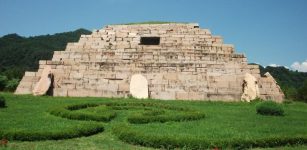 Complex Of Goguryeo Tombs: Beautiful Ancient Wall Paintings Displaying History And Mythology Of North Korea
Civilizations | Oct 19, 2018
Complex Of Goguryeo Tombs: Beautiful Ancient Wall Paintings Displaying History And Mythology Of North Korea
Civilizations | Oct 19, 2018 -
 Jedek: Previously Unidentified Language Found By Swedish Linguists In in Southeast Asia
Linguistic Discoveries | Feb 9, 2018
Jedek: Previously Unidentified Language Found By Swedish Linguists In in Southeast Asia
Linguistic Discoveries | Feb 9, 2018 -
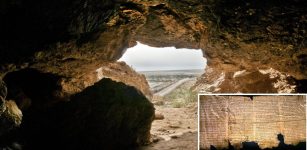 DNA Sheds New Light On The Mysterious Dead Sea Scrolls
Archaeology | Jun 2, 2020
DNA Sheds New Light On The Mysterious Dead Sea Scrolls
Archaeology | Jun 2, 2020 -
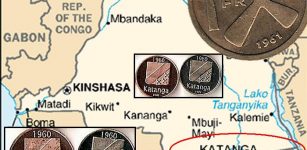 Katanga Cross: Symbol Of Secrets, Power And Valuable Currency Of The Congolese People
Ancient Symbols | Sep 10, 2018
Katanga Cross: Symbol Of Secrets, Power And Valuable Currency Of The Congolese People
Ancient Symbols | Sep 10, 2018 -
 Mystery Of Panxian Cave: How Could Gigantic Animals Reach A Mountain Cave Located Over 1600m Above Sea Level?
Featured Stories | Jul 1, 2014
Mystery Of Panxian Cave: How Could Gigantic Animals Reach A Mountain Cave Located Over 1600m Above Sea Level?
Featured Stories | Jul 1, 2014 -
 Were Owl-Shaped Plaques Children’s Toys In Copper Age?
Archaeology | Dec 1, 2022
Were Owl-Shaped Plaques Children’s Toys In Copper Age?
Archaeology | Dec 1, 2022 -
 World’s First ‘Cash Machine’ Discovered In A Wall Of An Ancient Bakery
Archaeology | Apr 1, 2022
World’s First ‘Cash Machine’ Discovered In A Wall Of An Ancient Bakery
Archaeology | Apr 1, 2022 -
 On This Day In History: Johannes Kepler ‘Father Of Modern Astronomy’ Was Born – On Dec 27, 1571
News | Dec 27, 2016
On This Day In History: Johannes Kepler ‘Father Of Modern Astronomy’ Was Born – On Dec 27, 1571
News | Dec 27, 2016 -
 A Scientist’s Powerful Dream Revealed An Extraordinary Archaeological Discovery
Featured Stories | Jan 25, 2019
A Scientist’s Powerful Dream Revealed An Extraordinary Archaeological Discovery
Featured Stories | Jan 25, 2019 -
 Bog Body Of The Elling Woman: Was She Sacrificed To The Gods Because Of Climate Change?
Civilizations | Mar 25, 2017
Bog Body Of The Elling Woman: Was She Sacrificed To The Gods Because Of Climate Change?
Civilizations | Mar 25, 2017 -
 DNA Evidence Ice Age Humans Migrated From China To The Americas And Japan
DNA | May 9, 2023
DNA Evidence Ice Age Humans Migrated From China To The Americas And Japan
DNA | May 9, 2023 -
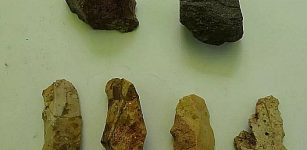 İnkaya Cave Study Brings To Light 86,000-Year-Old Traces Of Human Life
Archaeology | Aug 22, 2023
İnkaya Cave Study Brings To Light 86,000-Year-Old Traces Of Human Life
Archaeology | Aug 22, 2023 -
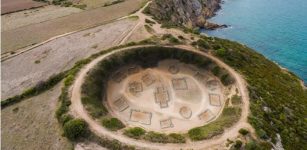 LIDAR Discovers Circular Iron Age Village At Cap d’Erquy, France
Archaeology | Apr 4, 2024
LIDAR Discovers Circular Iron Age Village At Cap d’Erquy, France
Archaeology | Apr 4, 2024 -
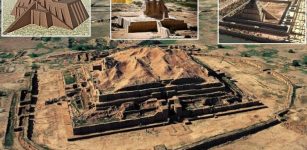 Ziggurats, Axis Mundi And Strong Connection To Religion In Mesopotamia
Featured Stories | Mar 17, 2021
Ziggurats, Axis Mundi And Strong Connection To Religion In Mesopotamia
Featured Stories | Mar 17, 2021 -
 Pryor Mountains Are Home To The Mysterious Little People – Native Americans Say
Featured Stories | Aug 2, 2021
Pryor Mountains Are Home To The Mysterious Little People – Native Americans Say
Featured Stories | Aug 2, 2021 -
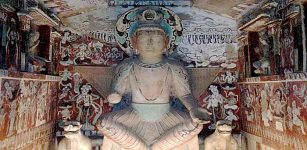 Mogao Grottoes, Dunhuang, China – Fascinating Statues, Manuscripts And Wall Paintings
Featured Stories | Dec 15, 2015
Mogao Grottoes, Dunhuang, China – Fascinating Statues, Manuscripts And Wall Paintings
Featured Stories | Dec 15, 2015 -
 Knowledge Of Divine Alien Beings And High-Tech In Ancient Egypt Described In Sacred Books And Papyrus – Reincarnation, Cloaking Technology And Space Travel – Part 2
Featured Stories | May 16, 2021
Knowledge Of Divine Alien Beings And High-Tech In Ancient Egypt Described In Sacred Books And Papyrus – Reincarnation, Cloaking Technology And Space Travel – Part 2
Featured Stories | May 16, 2021 -
 Why Were Viking Raids So Successful?
Ancient History Facts | Aug 3, 2016
Why Were Viking Raids So Successful?
Ancient History Facts | Aug 3, 2016 -
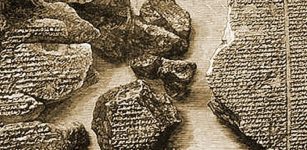 On This Day In History: Chaldean Account Of The Deluge Translated And Presented For The First Time – On Dec 3, 1872
News | Dec 3, 2016
On This Day In History: Chaldean Account Of The Deluge Translated And Presented For The First Time – On Dec 3, 1872
News | Dec 3, 2016



